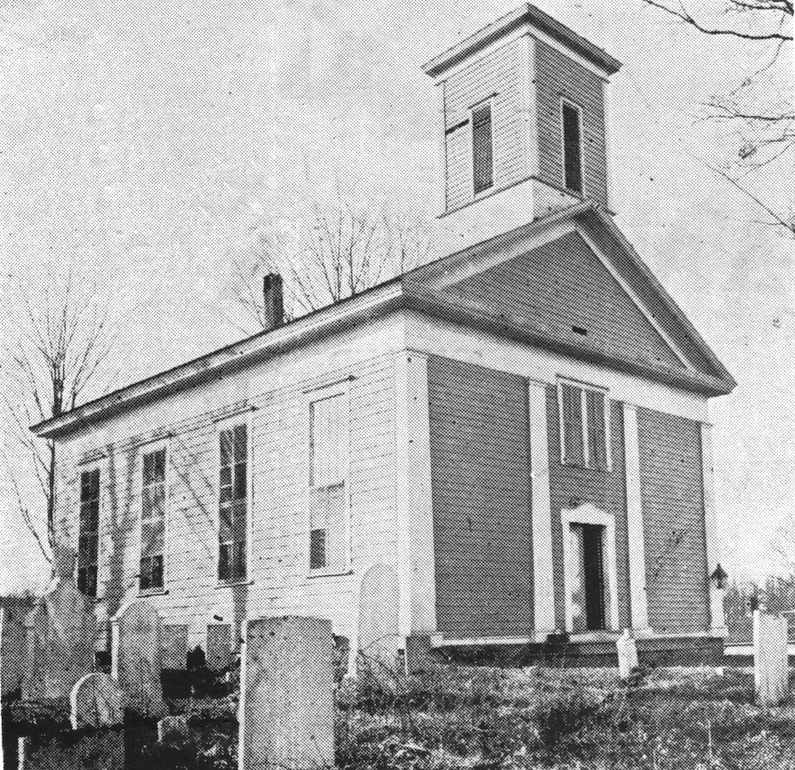
Built for the Ages
Spring 2012
“It is our hope that The United Methodist Church of Milton and Marlboro will continue to serve as a beacon of light in our communities for many generations to come.”
As the War of 1812 between Great Britain and the experiment in freedom known as America started, a more hopeful endeavor occupied a pious group in Milton, NY. Knowing one of the benefits of the nation’s prior war with Great Britain was the freedom to worship (or not) as you saw fit, these dedicated souls built themselves and their community a church for the ages.
Thanks to that spirited, dedicated group, Milton today boasts the oldest organized church of the Methodist denomination in the county. On November 17th, 2012, the United Methodist Church of Milton and Marlboro celebrates 200 years of service. It is hard to fathom that this church building is only 23 years younger than the US Constitution. The Methodist spirit predates even that.
Incorporated originally as the Methodist Episcopal Church and built during the next two years, its initial cost was $1,907.12. Although that sounds very inexpensive to us now, consider the loss of purchansing power of the dollar over two hundred years. In today’s dollars the initial church structure cost those thrifty Methodists, who carefully calculated to the last cent, approximately $32,000.* We assume the labor must have been donated.
Several additions and upgrades have followed since 1812 accommodating not just the growth of participation, but also the comfort of the participants. From whale oil, to acetylene gas, and finally to electric lighting, the church progressed with the nation’s inventive spirit. Upgrades to the aesthetics of the church included installation of stained glass by Tiffany, carpeting, and alter pieces. Music was originally supplied by a melodion, an inexpensive organ often found in homes of the early 1800s. As the congregation gerw and prospered, music accompaniment was provided by a pump organ, then a pipe organ, and finally an electic organ.
Nineteen-hundred and four saw a major remodeling of the church building (see below). In addition to a handsome and fitting tower, a bell was purchased from the then unused Lattintown Church. From 1904 on, the bell has called the Methodists to services.

Postmarked 1906 postcard showing the Milton Methodist Church after the renovations of 1904.
The congregation initially held their services in their homes. In 1786, two local Methodist circuit riders (clergy who traveled to smaller communities by horse), Ezekiel Cooper and Samuel Purdy, preached at the homes of members prior to the 1812 construction. According to C.M. Woolsey’s History of the Town of Marlborough, one of those homes belonged to John Woolsey and the house still exists on Old Indian Road in Milton.
A separate building was donated to the congregation in memory of Mr. and Mrs. Curtis Northrip by Mrs. Herman Traebold. That building has housed the Sunday School since 1984. Handicapped access and a new heating system were installed in the church in 1986.
The present congregation represents the merger of the Marlboro and Milton Methodist Churches. That has been the case since 1982 when it was approved by the New York Annual Conference.
A. Vicky Annin, Pastor in 2002, wrote in a message to the congregation in a book celebrating the church families, “May this pictorial directory, which symbolizes our life together in community, remind you of the tie that binds us to one another and the joy of sharing our many and diverse talents.”
The many and diverse talents that drew the original Methodists together on the outskirts of nowhere in 1812 and put their hands, hearts, and fortunes together are also remembered and celebrated, especially this year. Congratulations to their spiritual kin who keep the church’s grand heritage intact.
* This is calculated using the dollar of 1812 as one hundred cents and it having depreciated to seven cents in 2011. www.mykindred.com/cloud/TX/Documents/dollar/
Three people, a banker, an accountant, and an economist, looked at this problem and came up with three ways of looking at the building’s value. Estimates ranged from $32,000–$262,000. We chose to use the most modest calculation.
